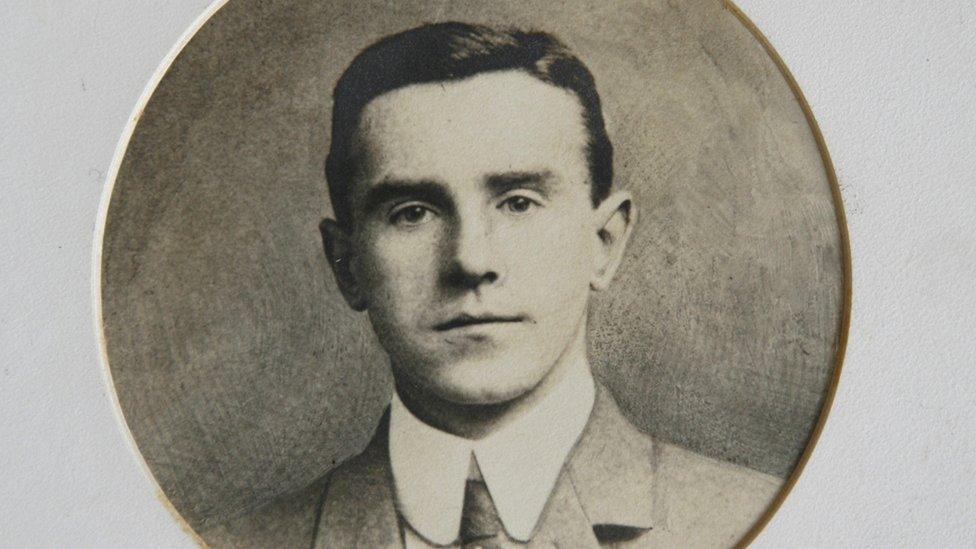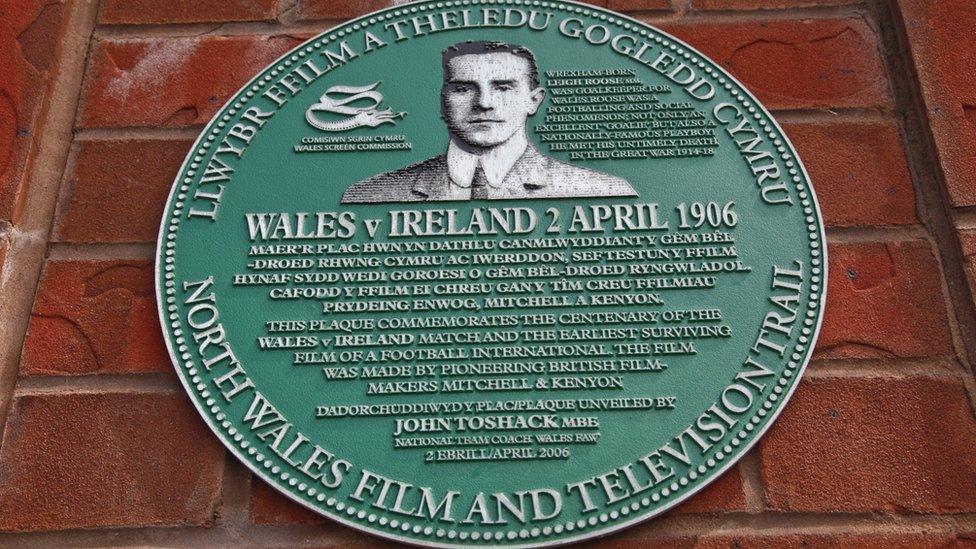Wrexham mural for Edwardian football star Leigh Richmond Roose
- Published

Schoolchildren are helping to celebrate the life of one of football's first genuine superstars, who died a century ago at The Battle of the Somme.
Edwardian goalkeeper Leigh Richmond Roose - born in Holt, Wrexham, in 1877 - dominated the sport, playing for many clubs and winning 24 caps for Wales.
He also made headlines off the pitch, courting married music hall star Marie Lloyd.
Children and artists will create a collage of Rhoose in Wrexham.
The pupils from Alexandra Community Primary School and St Giles VC Church in Wales Primary will recreate the footballer's role in the first international match to be captured on film, between Wales and Ireland at Wrexham's Racecourse ground on 2 April 1906.
The silent black and white film, which lasts for two minutes 10 seconds, is now lodged for safe keeping with the National Screen and Sound Archive of Wales, in Aberystwyth.
Kevin Critchley, the manager of Eagles Meadow shopping centre where the collage is to be displayed, said: "It has always been and always will be a football-mad town and it is right and proper we remember the important part Wrexham has played in the history of world football, along with the story of the remarkable Leigh Richmond Roose."

A commemorative plaque to Roose is at Wrexham's Racecourse ground
Roose started his amateur career at Aberystwyth Town in 1895, while studying medicine at the university there.
At first he was famed for his antics - turning his back on play to tell jokes to the crowd and performing acrobatics from the crossbar.
But within five years he had led the team to the Welsh Cup and was increasingly appreciated for the style of play which earned him his big money move to the English First Division.
He went onto play for Stoke City, Everton, Sunderland, Celtic, Aston Villa and Woolwich Arsenal.
'Too terrified'
His biographer, Spencer Vignes, explained the Football Association was even forced to change the rules of the game because of him.
"Before Leigh, goalkeepers were just shot-stoppers, if they came off their line they had no protection from being punched, shoulder-charged and trampled by the forwards, in a game which was vastly more physical than today.
"Usually they were too terrified to come out of their goal, even though - in those days - they were allowed to handle the ball anywhere in their own half of the field.
"But Leigh was such a physical specimen that he could take on the forwards at their own game.
"He'd flatten the striker, catch the ball, and carry play up field like a rugby fullback does today.
"So in 1912, at the end of his career, the rules were changed so that keepers could only handle the ball inside the penalty area."
At the outbreak of World War One, Roose joined the Royal Army Medical Corps, and latterly the Royal Fusiliers, for whom he earned the Military Medal.
But just weeks after learning of the honour, Roose was killed on 7 October, 1916, in the final days of The Battle of The Somme.
- Published10 September 2011